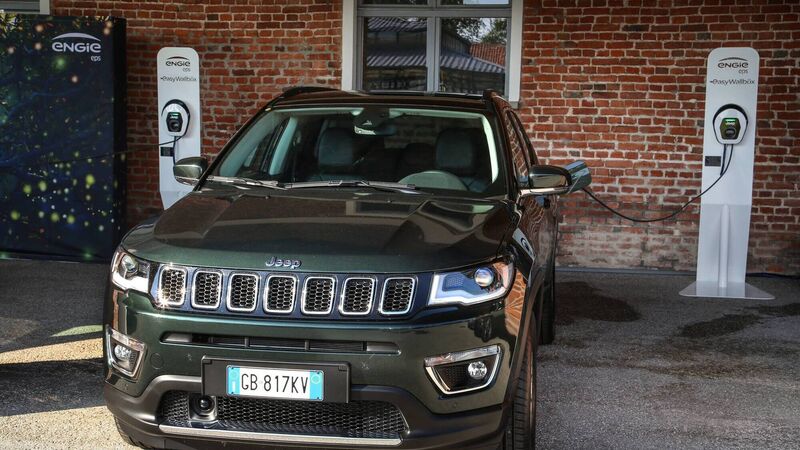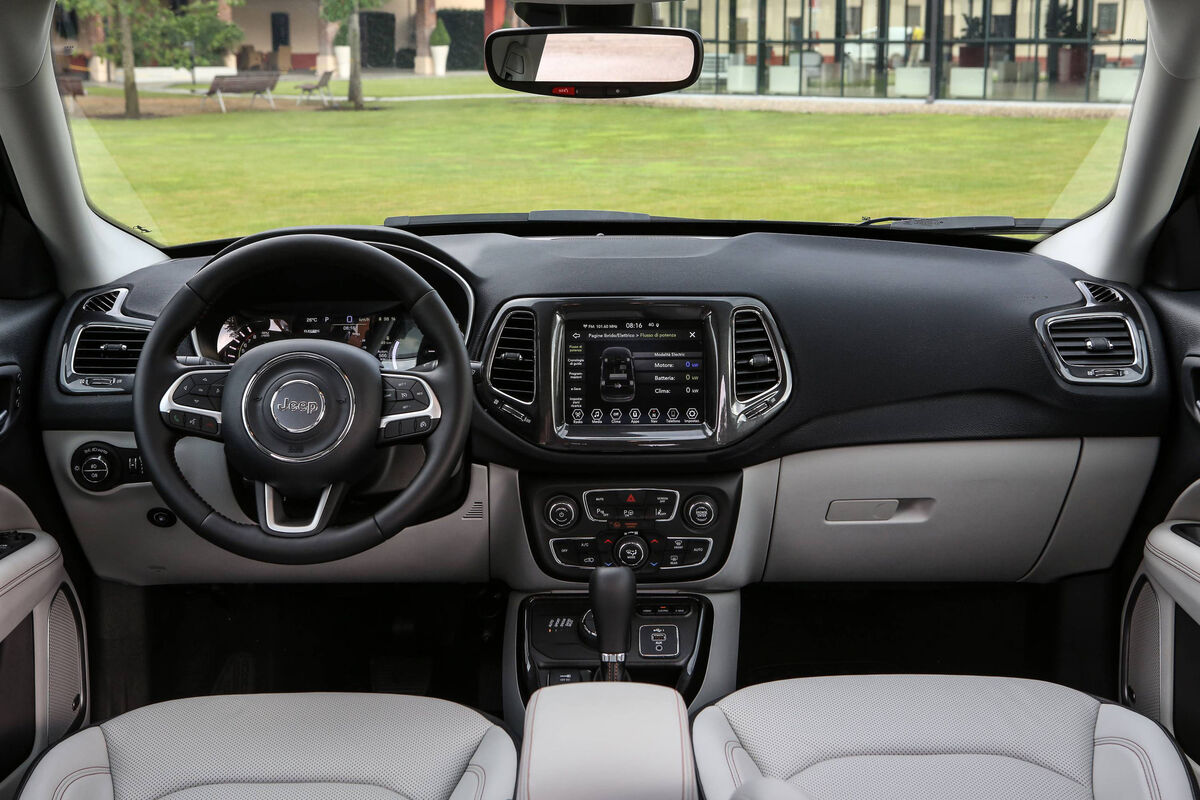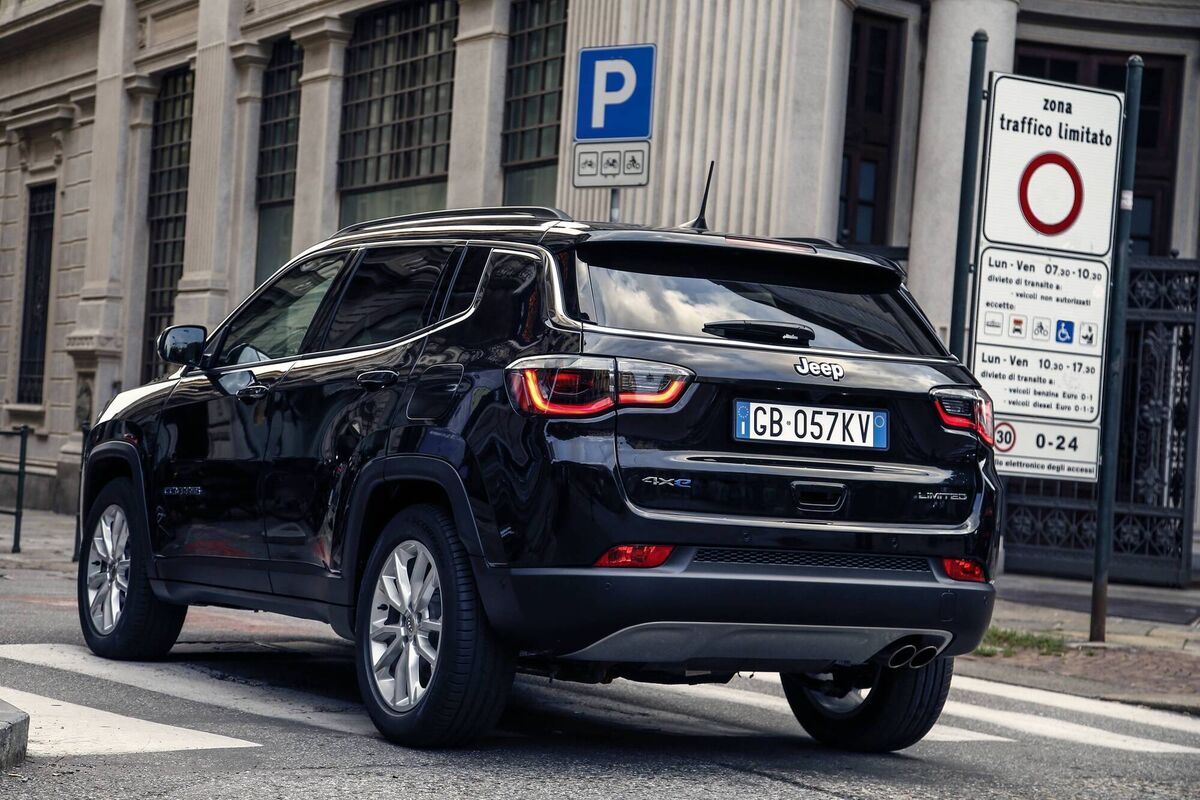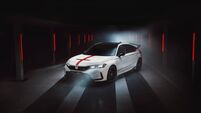Jeep Compass review: It doesn't make much sense and is lacking in direction

The Jeep Compass — convolutedly named 1.3 GSE PHEV eAWD in ‘S’ specification — is a plug-in hybrid but there are also pure petrol and non-plug-in hybrids available.
|
Jeep Compass |
|
|---|---|
|
Rating |
★★★☆☆ |
|
Price |
From €43,995 - €54,995 as tested. |
|
Engine |
Seems sprightly and economic on paper; it’s not |
|
The Spec |
Kitchen sink, anyone? |
|
Verdict |
Slightly better than before, but not much |
I mean, what’s going on in the States right now is not particularly funny, what with a conservative majority in the Supreme Court reversing a decades-long right to abortion; a seemingly lawless former president not being brought to book; a social system riven by class divide; an opiate crisis created by greedy pharma companies, and rampant racism being fuelled by politicians who should know better. It’s not easy being American these days.
I know diehard US citizens — life-long Republicans, even — who when overexposed to the semi-fascist rantings of the right-wing media there and, er, a former president of their country, declare themselves to be horrified by the political goings on in Washington and points west and — gasp — willing to vote for the Democrats.
Aside from the grim political japery that has characterised American life for so long now and led most outsiders to the grim conclusion that saving “the world’s greatest democracy” is nearly beyond them — and us — their cars
at least have given us much to be humoured by.
Indeed, the US automotive industry has — all by itself — given us so much comedic material down the years, it is barely plausible there is still such an industry on four wheels.
I mean, try naming a top five of American designed and made classic cars down the years.
Those two aren’t even normal cars, rather being of the muscle-car variety and, in engineering terms neither is really a classic of design, but a triumph of marketing which has made them attractive to a broad spectrum of knuckleheads who refused to be swayed by the brilliance of something as simple as all-round independent suspension systems.
“Powah,” they will screech, “give us more powah.” That’s basically what it’s all about in this, admittedly, great land.
Powah and pick-ups, essentially. Those are the kernel of the American contribution to the automotive industry’s hall of fame.
Drive around the States and you’ll be shocked by the number of foreign cars there are on the roads, led by the Japanese, the Koreans, and the Europeans.
The former two are purchased because of their reliability (a notable absentee in the American industry’s canon) and resale values.
And, the latter are only really coming to the fore in recent years.
Just with regard to Jeep products, though, we’ve had fun with them down the years largely because of their ‘flying brick’ styling, primordial engineering and the throw-everything-at-it attitude when it comes to added specification on the cars.
We even coined a phrase for the latter phenomenon some years ago — “everything but the sinking kitsch”.

Having said all that, however, we did highly regard some of their cars not necessarily for their build quality (non-existent until quite recently), but for their ability to go pretty much anywhere and also their cost-effectiveness.
And down the years we got to know quite few Jeep fans who were dedicated followers and who could not be persuaded that this slice of Americana was anything other than a gem of automobile production.
That it never was, is a matter of considerable truth but, you know, there’s nowt as strange as folk and as we’ve so often opined in these columns, one person’s meat is another person’s murder. There’s no rationality to it, but it is a simple truth of life.
So, then we’ve arrived at this week’s tester which is one of a three-pronged attack on the mid-size SUV market and the Jeep Compass we tried recently was the convolutedly named 1.3 GSE PHEV eAWD in ‘S’ specification.
This is a plug-in hybrid and there are also pure petrol and non-plug-in hybrids available, but presumably this one is on the press fleet because it is the one which will appeal to the public most.
Worth pointing out at this juncture is that this, er, giant of the American industry was until recently under the control of the Chrysler organisation.
It then merged with Fiat to become FCA (Fiat Chrysler Automobiles) and subsequently that entity merged with the Peugeot/Citroen/Opel alliance to become Stellantis, which is now the fifth largest car maker in the world.
On paper, anything with 240 bhp, a top speed of 200km/h and a 7.3 second 0-100km/h time looks like it could be the berries, but the reality is a little different.
Truly, this is a car that never seems quick and I thought it to be a ponderous thing from which it was difficult to extract the potential.
There is no effortlessness about this Compass and you have to work yourself and the car hard to get the most of it. Despite the power on offer you really have to keep the shoe in to root it out and while it is not exactly reluctant, it does take some persuasion.
It may be that the car is designed this way to maximise petrol consumption — which Jeep claim to be in the region of 1.9 l/100km or 147.3mpg, a ludicrous figure which is in reality more along the lines of 5.8 l/100km or 48.2mpg.
The electric-only range is said to be 50km, but again that’s on the optimistic side.
The 4x4 system, long a stable of Jeep products, is slightly at variance with what you might be used to.
The rear wheels are only driven by the electric motor, so you need a full charge if you’re tackling a Tibetan mountain pass. Even at that, however, the said mountain pass would have to be a short one because the electric range is so limited.

On-road the car does tend to lean a little, but not as much as previously as the siting of the batteries underneath the chassis has balanced things out a little, but otherwise the handling and ride are no more than satisfactory and the Compass will win few awards in this department.
The steering too is another issue as beyond about 60km/h it become vague and takes away any sense of confidence you might have had in the pressing-on department.
As I’ve alluded, the interior is very American — plush and extensive. You do get stuff like the 10in infotainment screen which is easy to use, if a little slow.
The instrumentation binnacle integrates a system that tells you all about brake regeneration and all sorts of other stuff on an ‘as live’ basis which is entertaining but hardly essential.
Leather seats — electric in the front — are comfortable and squishy, but the soft-touch materials used throughout feel rough and cheap, as do things like the steering column stalks for indicators, lights and wipers.
And, when you put it up against class competitors such as the Nissan Qashqai, the Peugeot 3008, the Skoda Karoq, the Volvo XC40 and so many others, the Compass doesn’t seem to make much sense.
It might be a little early in the Stellantis party to draw too many conclusions with regard to Jeep, although its future is now a lot more secure than before.
There is a long way to go, though, before we can stop taking the mick.


